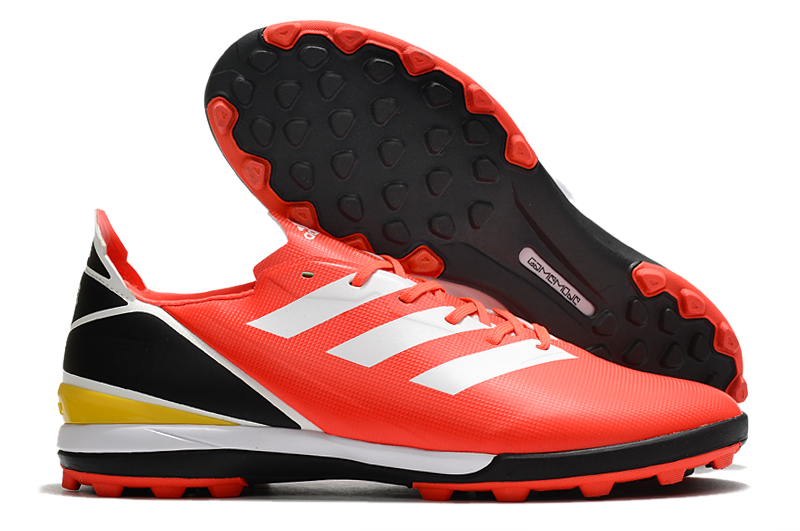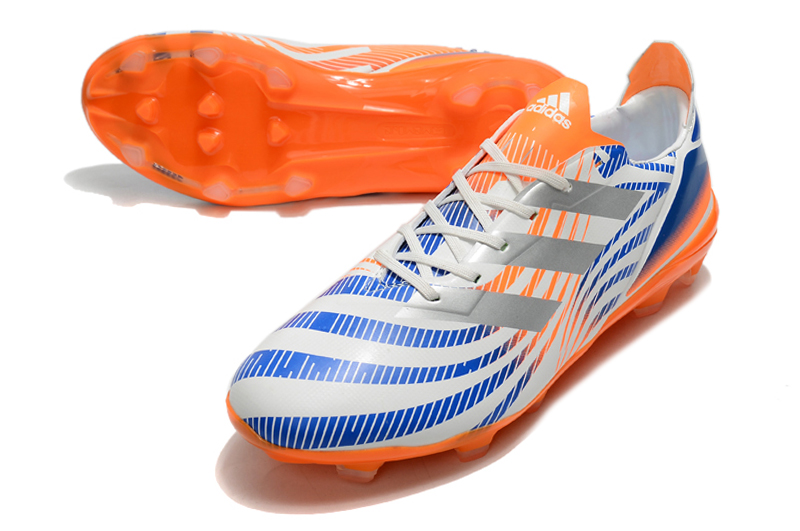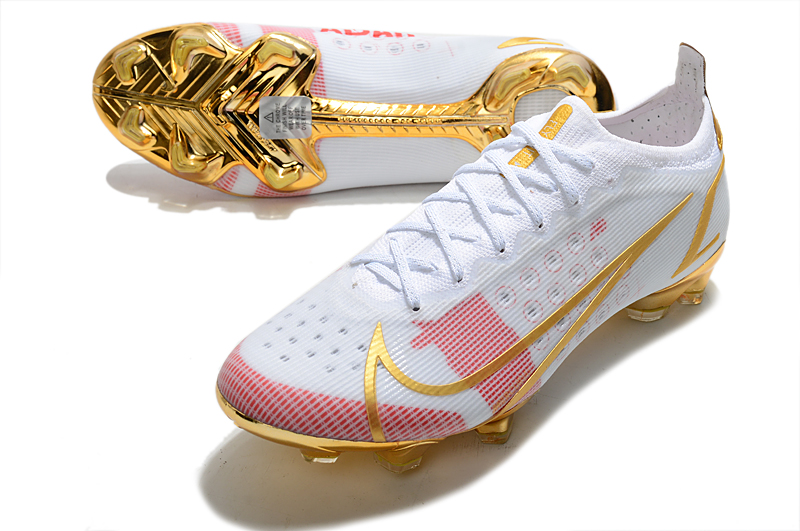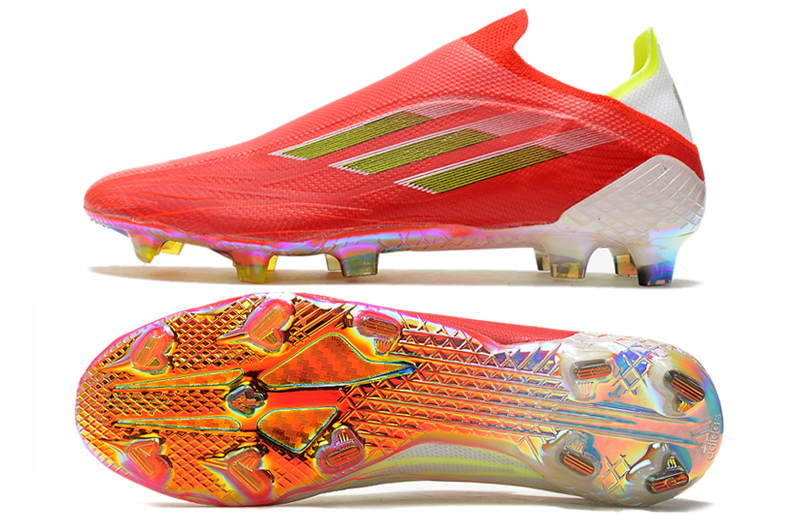“Beyond the Pitch” is a week-long series of all things about football (read: football) combined with UEFA EURO 2020, rescheduled last year and started on June 11th. Go here to learn more about our immersive reports.Football is a game that can be determined in an instant-through steals, timely interceptions or magical moments. The meager profits make all the difference, which is why elite teams are usually built around game changers like Lionel Messi and Cristiano Ronaldo.This is why the advancement of football shoes and their technology can be regarded as a game changer. The latest and greatest not only allows elite athletes to realize their potential, but a truly innovative football shoe can also change the trajectory of the sport.
 Kangaroo leather uppers and metal studs were standard features decades ago, but the pursuit of lighter and more versatile football shoes has prompted manufacturers to try different stud configurations, synthetic materials, and upper designs. The design of football shoes is constantly innovating, always pursuing the ultimate upgrade.Although all football shoes do the basic skills and complete the work, there are some that have a lasting impact on the game and the way we love the game. They are better than their peers. Our sportswear editor Fabian Gorsler and senior feature editor Graeme Campbell have an in-depth look at these game-changing football boots.
Kangaroo leather uppers and metal studs were standard features decades ago, but the pursuit of lighter and more versatile football shoes has prompted manufacturers to try different stud configurations, synthetic materials, and upper designs. The design of football shoes is constantly innovating, always pursuing the ultimate upgrade.Although all football shoes do the basic skills and complete the work, there are some that have a lasting impact on the game and the way we love the game. They are better than their peers. Our sportswear editor Fabian Gorsler and senior feature editor Graeme Campbell have an in-depth look at these game-changing football boots.
Adidas F50
 The F50 was launched before the 2004 European Cup, using kangaroo leather uppers and synthetic heels to reduce weight. Although many of Adidas’ top football players immediately wore it, the F50 only really changed the rules of the game a few years later after its first release. In 2006, before the World Cup in Germany, F50.6 became the first shoe in history that could be completely customized by the wearer. You can replace any or all of the upper, insole and studs (there are three types for different situations), which means that the possible combinations are endless.This is not just a gimmick, because it allows players to combine different types of studs (depending on the weather) with different insoles (ranging from lightness to comfort). It makes amateur players feel like professional players. F50 is also the first time we saw Lionel Messi (Lionel Messi) wearing sneakers that were considered signature shoes at the time. In 2008, Messi launched personalized versions of F50.8 and F50.9 TunIt. In the next few years, Adidas gradually phased out the customization of sneakers, and instead integrated adiZero technology into sneakers, making it one of the lightest sneakers on the market. Unfortunately, for many Adidas speed enthusiasts, the F50 was discontinued in 2016 and replaced by the Adidas X series.
The F50 was launched before the 2004 European Cup, using kangaroo leather uppers and synthetic heels to reduce weight. Although many of Adidas’ top football players immediately wore it, the F50 only really changed the rules of the game a few years later after its first release. In 2006, before the World Cup in Germany, F50.6 became the first shoe in history that could be completely customized by the wearer. You can replace any or all of the upper, insole and studs (there are three types for different situations), which means that the possible combinations are endless.This is not just a gimmick, because it allows players to combine different types of studs (depending on the weather) with different insoles (ranging from lightness to comfort). It makes amateur players feel like professional players. F50 is also the first time we saw Lionel Messi (Lionel Messi) wearing sneakers that were considered signature shoes at the time. In 2008, Messi launched personalized versions of F50.8 and F50.9 TunIt. In the next few years, Adidas gradually phased out the customization of sneakers, and instead integrated adiZero technology into sneakers, making it one of the lightest sneakers on the market. Unfortunately, for many Adidas speed enthusiasts, the F50 was discontinued in 2016 and replaced by the Adidas X series.
Nike Mercury
 As far as modern football shoes are concerned, there is no more iconic style than the Nike Mercurial. Although the list of players wearing these shoes includes Ronaldo, CR7, Kelly Ann Mbappé, Thierry Henry, Luther Van Nistelrooy and Zlatan Ibrahimovic – but Nike Mercurial is one of the few who have stood the test of time and developed their own aura.For starters, Nike Mercurial was first released before the 1998 World Cup in France. Its original name was Nike Tiempo Ultralight to reflect its lightweight design. Fortunately, the name has changed because Mercurial better encapsulates the entire content of the boot. Brazil’s Ronaldo is the first player to try on this pair of sneakers, which are designed for players with speed, strength and personal talent. If the Nike Tiempo is the always reliable Volvo in your garage, then Mercurial is the amazing Lamborghini.In the nearly 25 years since its launch, Nike Mercurial has taken various forms, including the ultra-light Mercurial Vapor, the Mercurial Superfly equipped with flying wires, the Mercurial 360 and the 2021 Mercurial Dragonfly. As Mercurial gets lighter and lighter, every iteration has made impossible improvements to its predecessor. Considering the popularity of Nike Mercurial from youth football to professional players, this sneaker goes very fast.
As far as modern football shoes are concerned, there is no more iconic style than the Nike Mercurial. Although the list of players wearing these shoes includes Ronaldo, CR7, Kelly Ann Mbappé, Thierry Henry, Luther Van Nistelrooy and Zlatan Ibrahimovic – but Nike Mercurial is one of the few who have stood the test of time and developed their own aura.For starters, Nike Mercurial was first released before the 1998 World Cup in France. Its original name was Nike Tiempo Ultralight to reflect its lightweight design. Fortunately, the name has changed because Mercurial better encapsulates the entire content of the boot. Brazil’s Ronaldo is the first player to try on this pair of sneakers, which are designed for players with speed, strength and personal talent. If the Nike Tiempo is the always reliable Volvo in your garage, then Mercurial is the amazing Lamborghini.In the nearly 25 years since its launch, Nike Mercurial has taken various forms, including the ultra-light Mercurial Vapor, the Mercurial Superfly equipped with flying wires, the Mercurial 360 and the 2021 Mercurial Dragonfly. As Mercurial gets lighter and lighter, every iteration has made impossible improvements to its predecessor. Considering the popularity of Nike Mercurial from youth football to professional players, this sneaker goes very fast.
Nike Tiempo
The Nike Tiempo changed the game when it was first released in 1983, for the simple reason that it represented the Swoosh’s first (real) step into the footballing world. It basically laid the foundation for Nike Football. Without the Tiempo, there is no Mercurial or Phantom GT or Hypervenom.While the very first Nike football boot was released back 1971, it was a $16.95 afterthought that didn’t hold up well in cold and wet weather. It took Nike over a decade to get it right. But get it right they did.Whereas the Mercurial is Nike’s hot and sexy (relative) newcomer, the Tiempo is the tried and tested “Uncle Drew.” That’s not to say that the boot’s technology is subpar, just that the boot is built for a different type of player. Lush leather uppers and sturdy studs make for a durable boot that is as versatile as the players that wore it.
Among names such as Andrea Pirlo, Jerome Boateng, and Carlos Puyol, one name stands out: Ronaldinho. The Brazilian magician — one of the best to ever do it — was the face of the Tiempo Legend line during most of the ’00s and is a big reason why the boot has enjoyed the sustained popularity that it has. Nearly 40 years of heritage speaks more than words ever could. The Nike Tiempo is here to stay.
adidas Predator
 The adidas Predator is the Three Stripes’ equivalent of Nike’s Mercurial in that it is one of the brand’s most popular boot silos in modern footballing history. Players such as Zinedine Zidane, David Beckham, Raul, Michael Ballack, and Paul Pogba have worn the adidas Predator, rivaled only by the Nike Mercurial’s roster of endorsers. That’s where the similarities stop, however, because the Predator — as its name suggests — is more of a powerful beast than a speed merchant.Debuted in 1994, the adidas Predator OG was a legitimate disruptor in the football boot world. Rubber was added to the boots upper and adidas’ iconic Three Stripes branding was modified to look like vicious fangs, giving the boot a monstrous look. adidas also opted for a black, white, and red color scheme, which has since become a hallmark of the German sportswear giant across all of its product offerings.It wasn’t until the second edition, in 1995, that the Predator series featured its signature fold over tongue. Asymmetrical lacing followed in 1998, ahead of the World Cup (which Zidane won in the Predator Accelerator), while adidas continued to add some of its greatest footballing innovations to the Predator line over the years.
The adidas Predator is the Three Stripes’ equivalent of Nike’s Mercurial in that it is one of the brand’s most popular boot silos in modern footballing history. Players such as Zinedine Zidane, David Beckham, Raul, Michael Ballack, and Paul Pogba have worn the adidas Predator, rivaled only by the Nike Mercurial’s roster of endorsers. That’s where the similarities stop, however, because the Predator — as its name suggests — is more of a powerful beast than a speed merchant.Debuted in 1994, the adidas Predator OG was a legitimate disruptor in the football boot world. Rubber was added to the boots upper and adidas’ iconic Three Stripes branding was modified to look like vicious fangs, giving the boot a monstrous look. adidas also opted for a black, white, and red color scheme, which has since become a hallmark of the German sportswear giant across all of its product offerings.It wasn’t until the second edition, in 1995, that the Predator series featured its signature fold over tongue. Asymmetrical lacing followed in 1998, ahead of the World Cup (which Zidane won in the Predator Accelerator), while adidas continued to add some of its greatest footballing innovations to the Predator line over the years.
The adidas Predator line was briefly discontinued in 2015, when the adidas ACE 15.1 was released. It was meant to be a modern-day equivalent of the Predator, however, the original name was brought back in 2018, when the first-ever laceless Predator boot was introduced. Since then, the boot has gone from strength to strength, and is still adidas’ premier boot offering that features the brand’s best football technology. 2020’s Predator 20, for example, featured 406 “spikes’ across the upper that were designed to grip and control the ball.